Global market share reaches 30%! Domestic communication chips explode
From 5G base stations to smart homes, from the Industrial Internet of Things to the Internet of Vehicles, communications chips, as the "nervous system" of the digital world, are becoming the new engine for the rise of domestic semiconductors.In 2025, China's communications chip industry has entered a new stage of rapid development and diversified breakthroughs. According to data from the World Integrated Circuit Association, domestic companies already hold 30% of the global IoT chip market share, demonstrating the competitiveness of domestic communications chips in the global market.
Many communication chip products included in this selection demonstrate breakthroughs in domestic technology at all levels: Qinheng Microelectronics' high-speed USB+NFC Bluetooth wireless SoC CH585, a high-performance 2.4G protocol that is 60 times faster than ordinary BLE; Leaguer Microelectronics' PLBUS PLC communication chip LME4015B, independently developed based on advanced OFDM orthogonal multi-carrier modulation technology; PANCHIP Micro's PAN312x high-performance, low-power wireless transceiver chip for flexible applications in different scenarios; AltoBeam's ATBM6461 low-power WiFi chip, with industry-leading keep-alive power consumption; Hefei Yunlink's optical transmission security encryption chip VTC2022S, with technological improvements in secure transmission; Taixin Semiconductor's TXW82X, which provides a 2.4GHz Wi-Fi+BLE multi-mode dual-core IoT SOC chip in IoT scenarios, meeting the fragmentation needs in IoT scenarios with high integration; and SIMCHIP Technology's SCS5501/SCS5502 MIPI A-PHY serializer/deserializer, which has passed AEC-Q100 Grade 1 automotive certification.
These products not only demonstrate significant progress in domestic communication chips in terms of technical performance, energy consumption control, and integration, but also reflect a strategic shift from single-point breakthroughs to a system-wide approach.
Qinheng
Nanjing Qinheng Microelectronics Co., Ltd. specializes in connectivity technology and microprocessor core research. It is an integrated circuit design company that builds integrated chips based on proprietary interface IP and microprocessor core IP. The company is committed to providing customers with chips and solutions that enable the interconnection of everything. Its main products include USB/Bluetooth/Ethernet interface chips and connectivity/interconnection/wireless MCUs, focusing on connectivity, networking, and control.
SoC and MCU chips can typically be broken down into several lower-level IP components. For example, designing a USB network card chip begins with either purchasing or developing the three major components separately: the USB PHY and controller, the Ethernet PHY and MAC, and the processor core. Unlike the quick and easy route of licensing PHY or processor IP components and then assembling them into chip designs, Qinheng, driven by performance, cost, and independence, adheres to a long-term approach and has continuously developed its own key IP components for many years, emphasizing the fundamentals and underlying construction. Our proprietary IP system provides flexibility in chip architecture. Compared to black-box, outsourced components, our in-house developed underlying components facilitate integrated connectivity optimization, improving overall performance and efficiency, reducing power consumption, and minimizing size. This allows for sustainable development and long-term marginal cost advantages.
CH585 High-Speed USB + NFC Bluetooth Wireless SoC
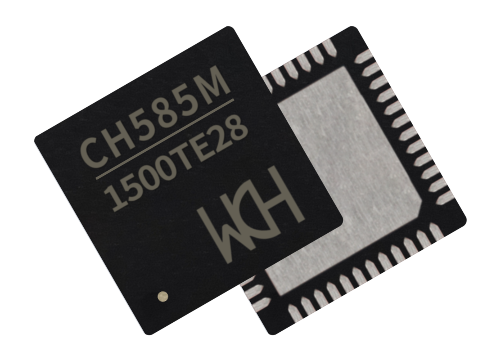
This high-performance 2.4G protocol is 60 times faster than standard BLE, delivering 8,000 packets per second, ultra-low latency, and extremely fast response. With in-house developed RF, baseband algorithms, and protocol stacks, as well as near-field communication (NFC) and 480Mbps high-speed USB PHY connectivity technologies, this single chip addresses diverse wireless and wired connectivity needs. A more optimized, power-efficient Qingke RISC-V core coupled with peripherals such as a segment LCD driver, LED dot matrix interface, and waterproof touch buttons reduces peripheral requirements. Easily build a variety of ultra-low-latency professional wireless applications.
Leaguer(Shenzhen)MicroelectronicsCorp.
Leaguer Microelectronics has 23 years of experience in power line communication (PLC) technology and chip design and development.
[Technological Innovation and National Standard Formulation]
For 23 years, the company has been dedicated to the research and development of power line communication (PLC) technology and chips. A pioneer in high-speed PLC technology, it independently develops a full range of PLC chips. It has led and participated in the development of 24 relevant standards, including those at the international, national, group, and industry levels. Among these, it is the author of the national standards "Low-Voltage Narrowband Power Line Communication - Physical Layer Specification" and "Low-Voltage Power Line Communication Protocol for Urban Streetlight Access," and a core contributor to the drafting of the IEEE 1901.1 and IEEE 1901.3 PLC international standards.
[Market Applications]
Leaguer Micro's PLC chips have been widely deployed in the national smart grid, making it a leading manufacturer of PLC chips for the national smart grid. The company's PLC technology and chips have been widely deployed and are operating stably in smart grids, smart photovoltaics, smart hotels, whole-home smart homes, smart lighting, integrated energy efficiency management, and the Industrial Internet of Things.
LME4015B PLBUS PLC Communication Chip
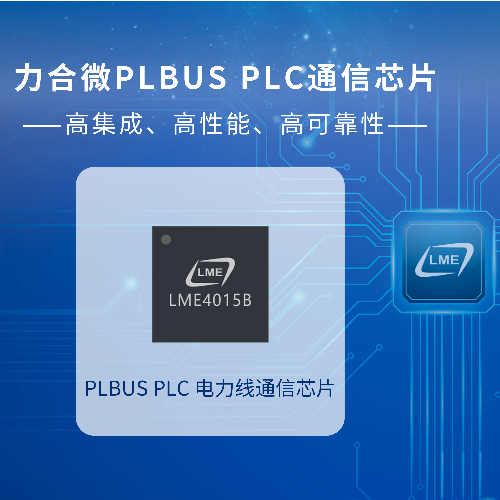
The LME4015B is a high-performance, highly integrated, high-speed PLBUS PLC power line communication chip. It features an ARM Cortex-M4F processor and a built-in encryption module, providing fast and efficient data processing. Equipped with large program and data RAM, a rich set of peripheral interfaces, and built-in Flash, it meets the needs of a wide range of application scenarios.
The LME4015B chip is widely applicable to industrial and consumer IoT smart devices, such as building/high-speed rail energy efficiency management, smart home appliances, whole-home smart lighting, industrial/commercial/home smart lighting, smart hotels, and smart photovoltaics. It eliminates the need for additional wiring and offers unshielded communication without blind spots.
1) This chip, with fully proprietary intellectual property rights, utilizes high-speed power line communication technology based on advanced OFDM orthogonal multi-carrier modulation, providing users with a more secure and reliable communication connection.
2) Utilizing a PLC MESH network, it incorporates dynamic adaptive routing technology, channel access techniques, and algorithms, including those at the MAC and network layers, ensuring uninterrupted connectivity even during network outages. 3) The PLBUS PLC communication chip has achieved large-scale market adoption, and its technology and applications are leading both domestically and internationally.
3) The PLBUS PLC communication chip empowers IoT applications in home furnishing, lighting, photovoltaics, and solar-storage-based direct-flexible systems, becoming a standard chip for major mainstream customers. Partner brands include Haier, A.O.SMITH, Tmall Jinyun Smart, Skyworth, TCL, Xidon, Tencent Lianlian, Aolevi, and Zhiyingqun.
4) Developed key technologies for high-speed power line carrier interconnection, including interoperability at the physical, link, and application layers. Support for the PLCP interoperability ecosystem, international standard IEEE 1901.1, and other standard protocols, as well as subsequent evolutionary versions.
PANCHIP Microelectronics
Shanghai PANCHIP Microelectronics Co., Ltd.., established in 2011, is a designer of ultra-low-power wireless communication chips. The company focuses on R&D and innovation of key technologies in high-performance, ultra-low-power RF, digital communications, and SoC technologies. It has developed three major product lines: the Chirp-IoT™ series for low-power wide area networks (LPWANs), the Bluetooth low energy series, and the 2.4G series. These products are targeted at applications in power, metering, photovoltaics, healthcare, sensors, automotive, fire safety, logistics, retail, agriculture, forestry, animal husbandry, location-based services, smart homes, and smart cities. The company is committed to becoming a global leader in ultra-low-power wireless communication chips.
PAN312x
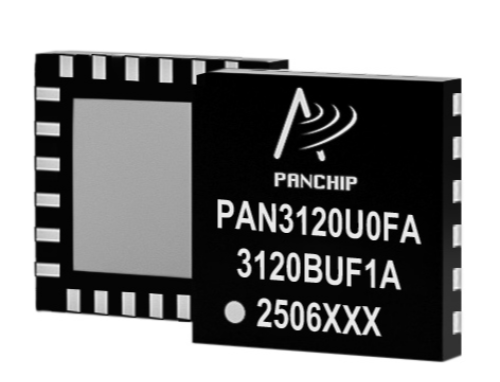
The PAN312x is a high-performance, low-power wireless transceiver chip that supports half-duplex wireless communication. Operating in the 130-1110 MHz frequency band, it features high interference immunity, high sensitivity, high transmit power, low power consumption, and long transmission distance. Data rates range from 2 kbps to 4 Mbps, with a maximum receive sensitivity of -124 dBm and a maximum output power of 21 dBm. The receiving current is only 5.8mA, the standby current is only 300nA, and it consumes only approximately 25.1mA at 13dBm output. It also supports a variety of data packet formats and encoding and decoding methods, making it flexible for use in applications such as industrial control, power supply, smart metering, smart home, and tire pressure monitoring.
AltoBeam
Founded in 2007, AltoBeam Inc. is a leading domestic wireless digital communication chip manufacturer specializing in the research, development, design, and sales of Wi-Fi chips and broadcast television receiver chips. Its main products include Wi-Fi chips and modules, universal TV tuner chips, and digital TV demodulator chips. Its R&D center and operations headquarters are located in Tsinghua Science Park in Beijing, with branches in Shenzhen and Xiamen. The company has established an international R&D team committed to continuous innovation and progress. Most of its R&D personnel are graduates of prestigious universities at home and abroad, including Stanford, UC Berkeley, Tsinghua University, and the Chinese Academy of Sciences. Leveraging its superior technical expertise, the company has entered the supply chains of numerous renowned companies, including CVTE, Anker Innovations, StarCent Technology, TCL, Skyworth, Mirui Technology, EZVIZ, Hisense, Changhong, Xiaomi, and Lumi. The company has been recognized as a national-level "Little Giant" enterprise specializing in specialized, innovative, and innovative technologies, a key integrated circuit design enterprise encouraged by the state, and a Beijing Science and Technology Research and Development Institution.
In the Wi-Fi chip sector, the company's products support high-throughput transmission of audio and video streams, supporting Wi-Fi 4/5/6 standards. The company has also introduced low-power chips, IoT chips, and other Wi-Fi chips for specialized application scenarios. The company's Wi-Fi data transmission chips and modules are primarily used in smart TVs and smart security applications, enabling the transmission of audio, video, and image data, meeting the high data volume, throughput, stability, and timeliness required by these applications. Based on the 2024 global smart camera market shipment forecast released by renowned research firm IDC, the company's share of the global security sector reached 57%. The company has adhered to an independent R&D model for many years, accumulating deep technical expertise in core Wi-Fi chip modules such as RF, baseband, and MAC. The company has become one of the few domestic Wi-Fi chip suppliers to possess both in-house R&D capabilities and independent intellectual property rights for these modules, and to achieve large-scale sales.
In the field of TV receiver chips, the company's silicon tuner chips feature small size, high integration, excellent RF performance, and flexible software configuration. As one of the world's top three suppliers, the company effectively ensures a secure supply of core components for my country's TV industry chain, holding approximately 30% of the global silicon tuner market. The company's demodulator chip products support both the Chinese standard DTMB and the European standard DVB. As one of the key contributors to the "Key Technologies and Applications for the Internationalization and Industrialization of DTMB Systems" project, the company received the "First Prize of the National Science and Technology Progress Award." The company has also launched a global demodulator chip for the DVB full-mode digital TV standard, which is used in various European standard terrestrial, cable, and satellite digital TV receiving terminals.
Currently, the company's products are widely used in industries such as smart security, smart TVs, smart homes, smart communities, office equipment, smart payment terminals, and commercial display terminals, and have been widely recognized by many leading industry customers.
ATBM6461
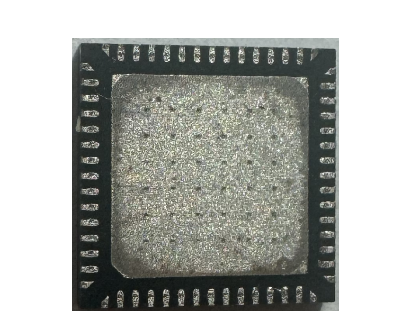
The ATBM6461 low-power WiFi chip features two high-performance RISC-V processors and up to 8MB of Flash memory. It boasts a rich set of peripheral interfaces and is widely used in battery-powered network cameras, smart doorbells, smart door locks, and other markets. The ATBM6461 independently implements the Wi-Fi protocol stack and the Matter connectivity standard, enabling seamless connectivity between devices. Even in Wi-Fi keepalive mode, it can stably transmit high-definition audio and video streams at 70Mbps, meeting user demands for high-quality and smooth video. Furthermore, its industry-leading Wi-Fi keepalive power consumption effectively extends the battery life of end products and reduces the need for frequent charging.
Yunlink Semiconductor
Founded in June 2020, Hefei Yunlink Semiconductor Co., Ltd. specializes in the research and development of processing chips for audio and video transmission, transmission, reception, encoding and decoding, and interfaces, as well as high-performance, low-power wireless IoT system-on-chips. Headquartered in the Innovation Industrial Park of Hefei High-tech Zone, the company has offices in Beijing, Shenzhen, and Shanghai. The company's main business is the design, development and sales of integrated circuits (ICs). It can also provide customized chip design, single-chip solutions and SOC chip solutions, and provide related technical consultation and technical services. The company's main products include the VTA803C series of car audio AudioCodec AB/D class amplifier chips, the VT620 series of low-cost, high-precision instrument amplifiers, the VTA52315 series of high-performance, low-voltage 2-channel audio modulation chips, the VTA5026 series of high-performance stereo amplifier audio chips, the VTM32 series of low-power high-performance microcontroller chips, the VTN6232 series of communication line driver amplifier chips, the VTC122 series of ultra-small, ultra-low-power, 20-bit, high-precision SD ADC chips, the VTM706T series of power-on reset chips, the VTC05 series of low-power Bluetooth 5.1/5.0 SOC chips, and the VTM91680C series of low-power Bluetooth 5.3 SOC chips. The application industries include professional audio and video, broadcasting systems, car audio and video, industrial control, Medical display products, as well as IoT applications such as Bluetooth indoor positioning, Bluetooth low energy networking, and Bluetooth smart scenarios.Yunlink Semiconductor boasts a team with strong design capabilities and extensive design experience. Core members have years of experience in ASIC/SOC chip development, familiar with analog, digital, and back-end technologies. They are proficient in the entire process from design and simulation to tape-out, packaging, and testing. They have extensive technical expertise in interface IP, CPUs, display drivers, image and audio processing, and wireless communications.
VTC2022S

The VTC2022S optical transmission security encryption chip achieves security by performing real-time encryption and decryption in optical communications. This chip consists of two components: a receiver that encrypts and transmits encrypted data; and a transmitter that decrypts and sends the actual data to the backend for further processing. Encryption and decryption are handled in parallel by an ARM Cortex-M3 core using AHBDMA.
Taixin Semiconductor
Established in November 2016, Zhuhai Taixin Semiconductor Co., Ltd. is a high-tech enterprise specializing in the AI/OT (Internet of Things) sector.
The company primarily develops and designs highly integrated, low-power, high-performance, secure, stable, and cost-effective chip products, including Wi-Fi communication chips and audio and video chips.
In terms of products, the company has developed and mass-produced Wi-Fi HaLow™ chips (the world's first), cost-effective Wi-Fi 4 and Wi-Fi 6 chips, wireless microcontroller chips, and audio and video Wi-Fi SoC chips. These products are widely used in security monitoring, the Internet of Things, smart home appliances, consumer electronics, and the Industrial Internet. The company is also a member of the WiFi Alliance, the Star Alliance, and the Wi-sun Alliance, continuously promoting technological innovation and application expansion, contributing to industry development.
The company specializes in AI/OT chips and microcontroller chips, and has successfully introduced them to numerous leading customers and has gained recognition from them. Furthermore,The company is also continuously improving its communications ecosystem, AI algorithm technology, high-definition display, and audio and video codec technologies to further enhance its capabilities and product competitiveness.
Audio and Video WiFi SoC: TXW82X
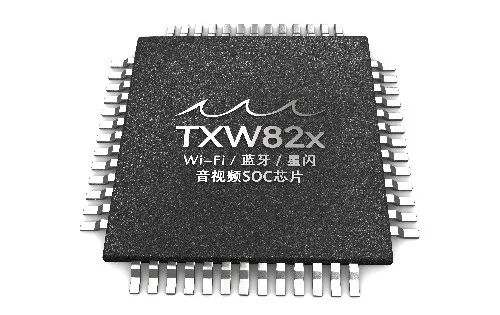
The TXW82X is a low-power, high-performance, highly integrated 2.4GHz Wi-Fi + BLE multi-mode dual-core IoT SoC. It integrates the IEEE 802.11 b/g/n baseband and RF (Radio Frequency) circuitry, including a power amplifier (PA), a low-noise amplifier (LNA), an RF balun, an antenna switch, and a power management module.
The TXW82X Wi-Fi baseband implements Orthogonal Frequency Division Multiplexing (OFDM) technology and is backward compatible with Direct Sequence Spread Spectrum (DSSS) and Complementary Code Keying (CCK) technologies. It supports IEEE 802.11 b/g/n protocols. It supports 20MHz standard bandwidth and 5MHz/10MHz narrow bandwidth, delivering a maximum physical layer rate of 72.2Mbit/s. The TXW82x chip integrates a high-performance Hematite dual-core 32-bit microprocessor with built-in MJPEG/H.264 (supporting VGA/720P/1080P). It offers a rich set of peripheral interfaces, including MIPI CSI/DSI, DVP.LCD, USB2.0 High-Speed Host/Device, SDMMC Host, SDI2.0 Slave, RMII MAC, SPI Master & Device, UART, IIC, IIS, PDM, IR Send/Receive, PWM, GPIO, and ADC/DAC. It supports running programs on SPI Flash. It supports RTOS and third-party components and provides an open, easy-to-use development and debugging environment.
Shanghai SIMCHIP Technology
Founded in August 2019, Shanghai SIMCHIP Technology focuses on the research and development and application of high-end analog integrated circuits, and is committed to providing customers with high-performance, high-quality domestic analog integrated circuit products. SIMCHIP Technology adheres to forward design and original innovation. It boasts a comprehensive R&D team for mixed-analog and digital product design and development, with mature capabilities in customized integrated analog front-end development. We offer customized design services to meet specific technical and product requirements.
SIMCHIP Technology boasts extensive technical expertise, strong R&D capabilities, and a comprehensive product portfolio. Its product line encompasses various analog-to-digital converters, digital-to-analog converters, operational amplifiers, and high-speed interface circuits, offering diverse grades across consumer, industrial, and automotive specifications. Its products are widely used in smart cars, new energy vehicles, communications, industrial control, medical devices, precision instruments, and various high-end consumer electronics. To ensure customer satisfaction, SIMCHIP Technology has established, implemented, and continuously improved its quality management system. We partner with leading packaging, manufacturing, and testing facilities in the industry. With superior engineering and quality control capabilities and sufficient and stable production capacity, we are committed to providing high-quality products and services to the industry.
SIMCHIP Technology's sales and technical support offices are located in Shanghai, Shenzhen, Beijing, Nanjing, Chengdu, Xi'an, Suzhou, and other cities, ensuring proximity to customers and timely response. CoreChi Technology has mass-produced nearly 100 analog chip products and continues to launch new products, enriching its product lines and actively expanding into the global market. The company is committed to becoming an internationally competitive analog chip design company.
SCS5501/SCS5502 MIPI A-PHY Serializer/Deserializer
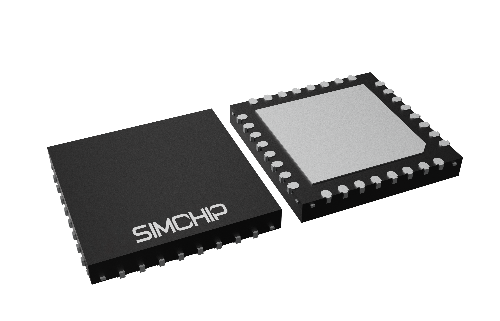
The CoreChi SCS5501 serializer and SCS5502 deserializer chips are based on the MIPI A-PHY public protocol and support 4Gbps high-speed bandwidth. They enable long-distance transmission over 15m coaxial cable or 10m shielded twisted pair cable, and integrate remote control, remote power supply, and remote high-speed video data transmission. This solution offers advantages such as long transmission distance, high transmission rate, low power consumption, low latency, strong anti-interference capabilities, excellent compatibility, and a high degree of standardization. Utilizing fully in-house developed IP and domestically produced processes, they possess independent intellectual property rights and are AEC-Q100 Grade 1 automotive certified.
Kilometer Electronic (KME)
Changzhou Kilometer Electronic Technology Co., Ltd. (KME) is a high-tech enterprise specializing in the research and development of wireless communication technologies for the Internet of Things (IoT). Founded by a group of veteran communications and integrated circuit design experts who firmly believe that technology can change the world, the company is committed to solving the challenge of large-scale, low-cost wireless coverage in the "last mile" through innovative technologies, thereby improving return on investment.
The company's independently developed LaKi technology (named for Last Kilometer Communication), encompassing the LaKiplus MAC layer protocol and the LK2400 series RF SoC chip, offers three key advantages: wide coverage, low latency, and ultra-low power consumption. It is currently primarily used in the IoT and wireless voice communications sectors.
In the IoT sector, LaKi technology supports air interface rates up to 1Mbps and achieves communication distances exceeding 1.5 kilometers with only 5.9mA current. This meets the large-scale, low-cost deployment requirements of over 90% of IoT scenarios, making it a core technology for IoT infrastructure in smart cities, smart factories, smart parks, smart mines, and smart agriculture and animal husbandry. In the field of wireless voice communications, motorcycle helmet intercoms powered by LaKi technology achieve four-way high-definition voice transmission over 8 kilometers with a transmit power of 100mW, surpassing the performance of similar products by five times. Leveraging the globally free 2.4GHz ISM band, they are perfectly suited for multi-channel wireless voice consumer electronics.
LaKi RF SoC Chip LK2400A
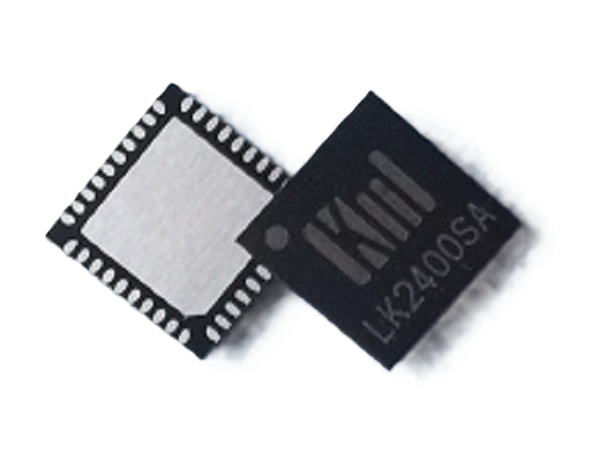
The LK2400 series chip is a highly integrated RF SoC chip, utilizing SMIC's 55nm process and packaged in a QFN package. It integrates a 32-bit MCU, 2.4GHz RF, PMU, RTC, PA, AES128, and Flash modules. It boasts a 1MHz bandwidth, a maximum on-chip PA of 5dBm, a voltage range of 2.5V-3.6V, a maximum transmit current of 5.9mA, a receive current of 7.5mA, an effective communication range of 1.5km @ 5dBm, and enhanced data security. Designed and developed independently by the Kilometer Electronics team, this wireless communication RF SoC chip boasts complete intellectual property rights.

